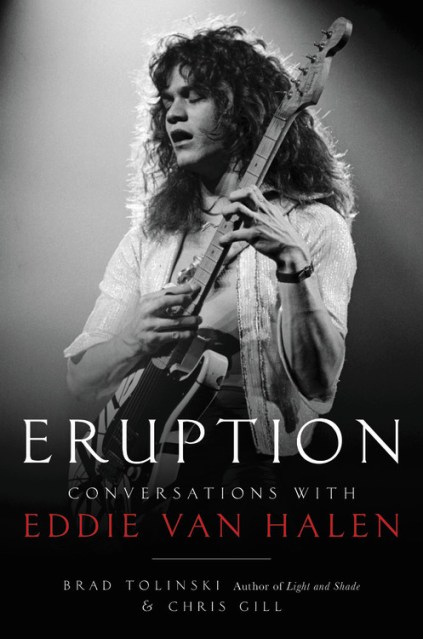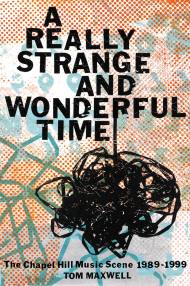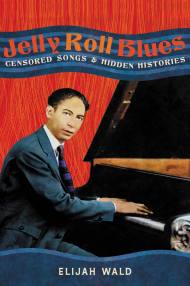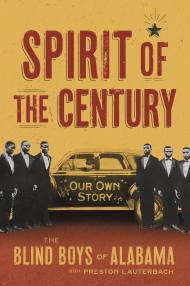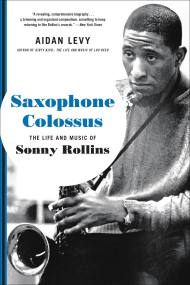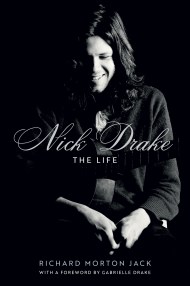Promotion
Use code MOM24 for 20% off site wide + free shipping over $45
Eruption
Conversations with Eddie Van Halen
Contributors
By Chris Gill
Formats and Prices
Price
$29.00Price
$37.00 CADFormat
Format:
- Hardcover $29.00 $37.00 CAD
- ebook $11.99 $15.99 CAD
- Audiobook Download (Unabridged) $27.99
- Trade Paperback $19.99 $25.99 CAD
This item is a preorder. Your payment method will be charged immediately, and the product is expected to ship on or around October 5, 2021. This date is subject to change due to shipping delays beyond our control.
Also available from:
Get a completely new look at guitar legend Eddie Van Halen with this groundbreaking oral history, composed of more than fifty hours of interviews with Eddie himself as well as his family, friends, and colleagues.
When rock legend Eddie Van Halen died of cancer on October 6, 2020, the entire world seemed to stop and grieve. Since his band Van Halen burst onto the scene with their self-titled debut album in 1978, Eddie had been hailed as an icon not only to fans of rock music and heavy metal, but to performers across all genres and around the world. Van Halen’s debut sounded unlike anything that listeners had heard before and remains a quintessential rock album of the era.Over the course of more than four decades, Eddie gained renown for his innovative guitar playing, and particularly for popularizing the tapping guitar solo technique. Unfortunately for Eddie and his legions of fans, he died before he was ever able to put his life down to paper in his own words, and much of his compelling backstory has remained elusive—until now.
In Eruption, music journalists Brad Tolinski and Chris Gill share with fans, new and old alike, a candid, compulsively readable, and definitive oral history of the most influential rock guitarist since Jimi Hendrix. It is based on more than 50+ hours of unreleased interviews they recorded with Eddie Van Halen over the years, most of them conducted at the legendary 5150 studios at Ed’s home in Los Angeles. The heart of Eruption is drawn from these intimate and wide-ranging talks, as well as conversations with family, friends, and colleagues.
In addition to discussing his greatest triumphs as a groundbreaking musician, including an unprecedented dive into Van Halen’s masterpiece 1984, the book also takes an unflinching look at Edward’s early struggles as young Dutch immigrant unable to speak the English language, which resulted in lifelong issues with social anxiety and substance abuse. Eruption: Conversations with Eddie Van Halen also examines his brilliance as an inventor who changed the face of guitar manufacturing.
As entertaining as it is revealing, Eruption is the closest readers will ever get to hearing Eddie’s side of the story when it comes to his extraordinary life.
Genre:
-
An Amazon Bestseller in Music Biographies
-
“During Eddie Van Halen’s lifetime, few—if any—journalists were granted the access that journalists Brad Tolinski and Chris Gill were afforded. And as Eruption: Conversations with Eddie Van Halen demonstrates, the guitarist’s trust was not misplaced. This is the final word on what made this epochal musician, guitar innovator and, it must be said, complicated man, tick.”Tom Beaujour, New York Times bestselling co-author of Nothin’ But a Good Time: The Uncensored History of the ‘80s Hard Rock Explosion
-
“Though he lived his adult life under a spotlight, Eddie Van Halen remains shrouded in mystery. There is no duo better suited to peel away the fictions and fog and get to the heart of Van Halen the man and the musician than Brad Tolinski and Chris Gill, two of the greatest guitar journalists of our era. That's exactly what they do in Eruption. Even the keenest fan will find surprises on every page.”Alan Paul, New York Times bestselling author of Texas Flood: The Inside Story of Stevie Ray Vaughan and One Way Out: The Inside History of the Allman Brothers Band
-
“Guitarists and rock fans can rejoice that Eddie Van Halen’s story has finally been told, accurately and with insights from those who knew him best. Tolinski and Gill compellingly unravel such details as the development of Ed’s two-handed tapping technique and the Frankenstein guitar, and sheds new light on every corner of Van Halen’s life and prodigious artistry. It’s a long-awaited and vital read about the most important and influential guitarist of the modern age.”Christopher Scapelliti, Editor-in-Chief, Guitar Player magazine
-
“Few journalists get a front-row seat to witness genius at work the way that Brad Tolinski and Chris Gill did over decades with Eddie Van Halen. In this comprehensive look at the late guitar virtuoso's art and artistry, the pair share everything they learned from the man himself."Kory Grow, Rolling Stone
-
“A respectful and detailed....tribute to a guitar legend.”Kirkus
-
“ERUPTION is the closest you will get to hearing Eddie’s side of the story when it comes to his extraordinary life. It’s a comprehensive and compelling nonfiction narrative about the guitar virtuoso and visionary. Kudos to Tolinski and Gill for bringing this to fruition.”The Aquarian
-
“Fans and guitar enthusiasts will appreciate this fresh look at the legendary Van Halen, with an emphasis on his technical wizardry.”Library Journal
- On Sale
- Oct 5, 2021
- Page Count
- 336 pages
- Publisher
- Hachette Books
- ISBN-13
- 9780306826658
Newsletter Signup
By clicking ‘Sign Up,’ I acknowledge that I have read and agree to Hachette Book Group’s Privacy Policy and Terms of Use
